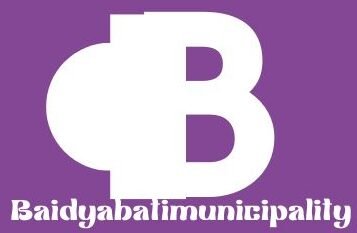It was during the COVID-19 pandemic that the $1400 IRS stimulus checks proved very beneficial to millions of Americans who were able to afford their basic necessities amid the economic upheaval it ushered during its wake. This payment was a provision of the American Rescue Plan Act of 2021, following the earlier round of direct relief by the government, but that also served as the core of federal assistance during that crisis. Indeed, the year 2024 is that where inflation and cost-of-living setbacks are adversely affecting many. There have been inquiries about whether new stimulus checks are set to come down the pike. This article will take a particular look into the status of such state and federal relief programs but will go further into other types of assistance, and tips on managing finances through turbulent times will be given.
A Look Back at the $1400 Stimulus Checks
This stimulus check $1400 is the third direct payment meant to offset the financial hit brought about by the pandemic. It succeeded $1200 payments under the CARES Act and $600 greenbacks distributing in late 2020. These checks were a lifesaver for many individuals. The payments were made available to be received by individuals earning up to $75,000 per year (or $150,000 for couples) and another $1400 per dependent, making it advantageous for families with children.
The proportion of income going to housing, utilities, food, health care, and other essentials increases dramatically. These checks create the most important economic salve for this time in the history of the world. As the economy began to gain some stability, demands for further one-time payments grew weaker as the federal focus shifted more to tax credits and targeted aid for small groups.
Current status of federal stimulus payments
Currently, at 2024, the federal government has not indicated any new federal $1400 stimulus checks. Many of the reasons hitting the bad list include:
Economic Improvement: Recovery has been noted in regard to most major performance indicators, such as unemployment rates and others since the h
Relief Efforts at the State Level
In the absence of federal stimulus payments, many states have rolled out their own financial relief initiatives. Examples include:
| State | Program | Details |
|---|---|---|
| California | Middle-Class Tax Refund | Eligible residents received up to $1050 in direct payments in 2023 |
| Colorado | Inflation Rebate | Tax rebates were issued to middle-income households to address rising costs |
| Maine | Relief Checks | $850 payments helped residents cope with increased living expenses |
Like many others, state programs have a set of unique benefits and eligibility requirements, making it mandatory for every citizen to be up-to-date with the local announcements for new openings.
Alternatives to Direct Stimulus Payments
While new federal checks may not be forthcoming, there are a variety of other forms of financial relief available:
Tax Credits
Programs like the Earned Income Tax Credit (EITC) and Child Tax Credit (CTC) provide meaningful support to low- and middle-income households. These credits can reduce tax liability or even result in refunds.
Unemployment Benefits
State unemployment programs are still kicking; they are offering monetary support for those who qualify. Pandemic-level enhancements have been wrapped up, but basic benefits are still alive.
Housing Assistance
Most of the states provide emergency rental aid combined with mortgage relief for individuals experiencing housing instability. Those programs help prevent eviction and foreclosure while assisting with utility expenses.
Healthcare Subsidies
Subsidized health insurance through the Affordable Care Act and Medicaid can help families manage medical expenses, ensuring access to critical care.
Managing Personal Finances in Challenging Times
You manage your money well, and now when help is nowhere close around you, discuss the best ways, such as:
- Make a budget: Keep track of monthly expenses, spending, and save for different things.
- Negotiate Bills: Contact a service provider, asking for discounts or even establishing a payment plan with the company. Many companies have systems that help people pay bills as they go along.
- Pursue Supplemental Income: Try gig work online, freelance opportunities, or part-time jobs to add up income streams.
- Giving Local Volunteer Support: Outreach organizations and charities have food and energy assistance programs, as well as many other empowering resources for communities. The steps mentioned may alleviate some of that financial burden and may yield future stability.
Conclusion
The chances of a new $1400 stimulus check in 2024 are still under the clouds, and indeed, some people have other alternatives for money consideration. Find out what the states provide, the tax credits, the community resource programs, and be sure to avail yourself of using sound practices.
FAQs
Q1. Which state programs can I apply to in 2024?
A1. At present, there are quite a number of states running its programs, like California, Colorado, and Maine. You may contact your state government for up-to-date announcements.
Q2. How do I maximize the use of tax credits for financial relief?
A2. Make sure to file taxes for credits like EITC and CTC, which together may reduce your tax liability or refund some part of them.
Q3. What do I do if I have housing issues?
A3. Check your state for emergency rental assistance and mortgage relief programs. Non-profits usually have these kinds of benefits.
Q4. How do you supplement your income when hit with a financial crisis?
A4. You may think of freelance, gig-job, or part-time jobs giving you flexible engagements. Upwork and Door Dash can help.



